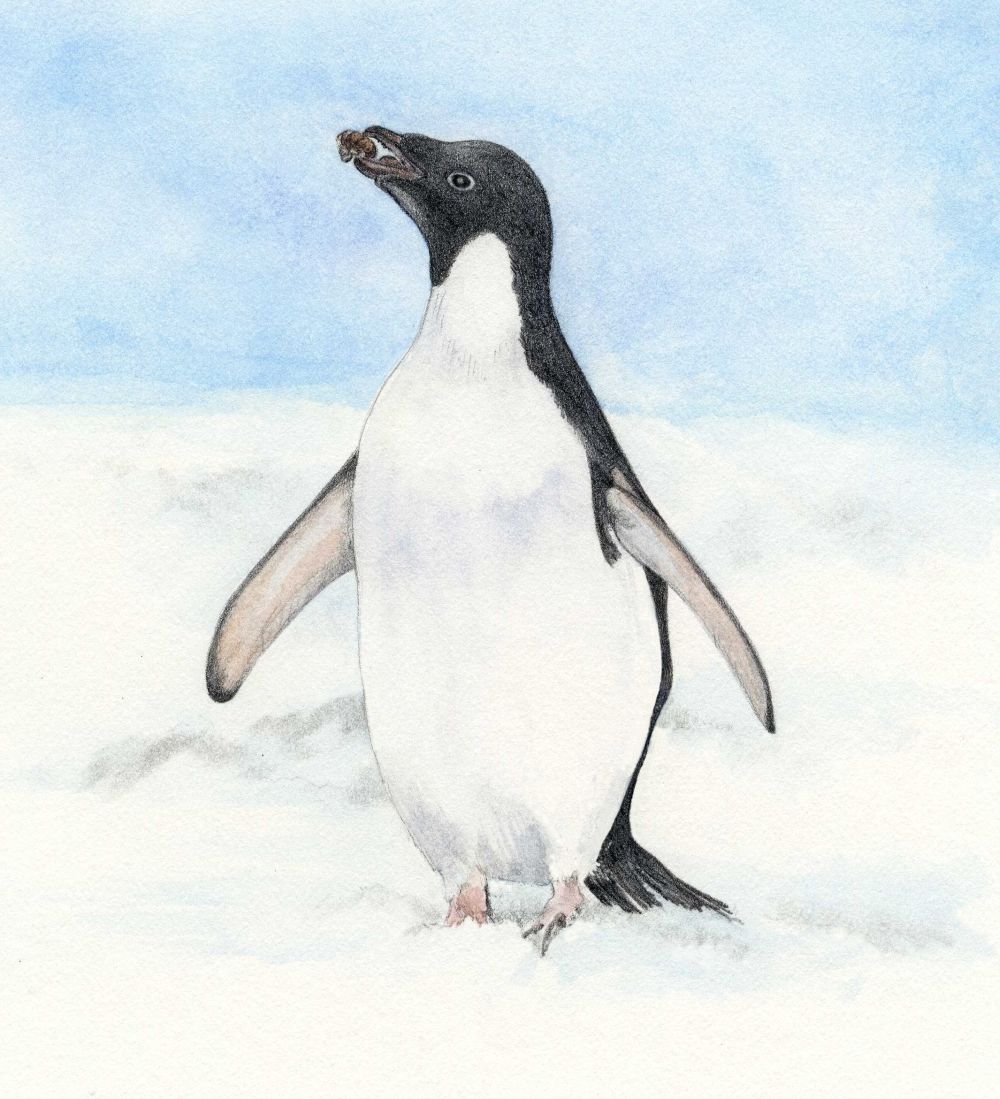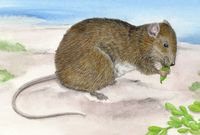
Adelie Penguin
Latin name: Pygoscelis Adeliae ,Conservsation status: near threatened (population is increasing)
Even though they can't fly, to avoid predators Adélie Penguins are able to leap almost ten feet out of the water and land safely onto rocks. They follow the sun from their breeding colonies to winter feeding grounds, travelling an average of 8,000 miles a year.
In winter, the sun doesn't rise south of the Antarctic Circle. If Antarctic sea ice decreases and does not extend far enough to the north, Adélie Penguins, during their winter migration, may not be able to reach the sunlight needed to navigate, hunt and avoid predators—they won't dive in the dark. Other threats are oil pollution, fishing and disturbance of colonies from research stations and aircraft.
Other animals effected by climate change
 Beluga
BelugaBelugas live in Arctic and Sub-Arctic waters. Impacts from climate change include: an increase in ship traffic as sea ice declines, oil exploration and extraction, fisheries by-catch, and disruption of the food web. As Arctic waters warm and currents change, the Humpback (a competitor) and the Orca (a predator) may move north and stay longer. Some Beluga populations are also threatened by hunting, pollution and habitat loss.
 Bramble Cay Melomys
Bramble Cay MelomysThe Bramble Cay Melomys was the first species to be declared extinct because of climate change. Sea level rise and storm surges washed away its habitat, food and the last of the population. In 2014 scientists went searching in the hopes of starting a breeding program but were unable to find a pair. Other sea birds and turtles that live on the Cay are also threatened by storm surges and sea level rise.
 American Pika
American PikaAmerican pikas occupy talus—rock piles that accumulate at the base of a slope—at high elevations in western mountains. Pikas are thought to be a prime example of the potential effects of climate change because they are sensitive to warm temperatures and rely on insulation provided by snow to survive cold winter temperatures. However, several recent studies indicate that pikas can be resilient to each of these factors. Most pikas in the Sierra Nevada survived the winter of 2014, when there was almost no snowpack. Pikas persist in many hot localities as well, demonstrating their ability to cope with high temperatures.
 Leatherback Sea Turtle
Leatherback Sea TurtleClimate change impacts the Leatherback in two main ways: an increase in the temperature of nesting sands causes a greater proportion of females to hatch, destabilizing future populations; and sea level rise and stronger, more frequent storms erode nesting beaches and wash away eggs and hatchlings. The Leatherback is also threatened from fisheries by-catch, egg collection, coastal development, pollution and ingestion of floating plastics.
